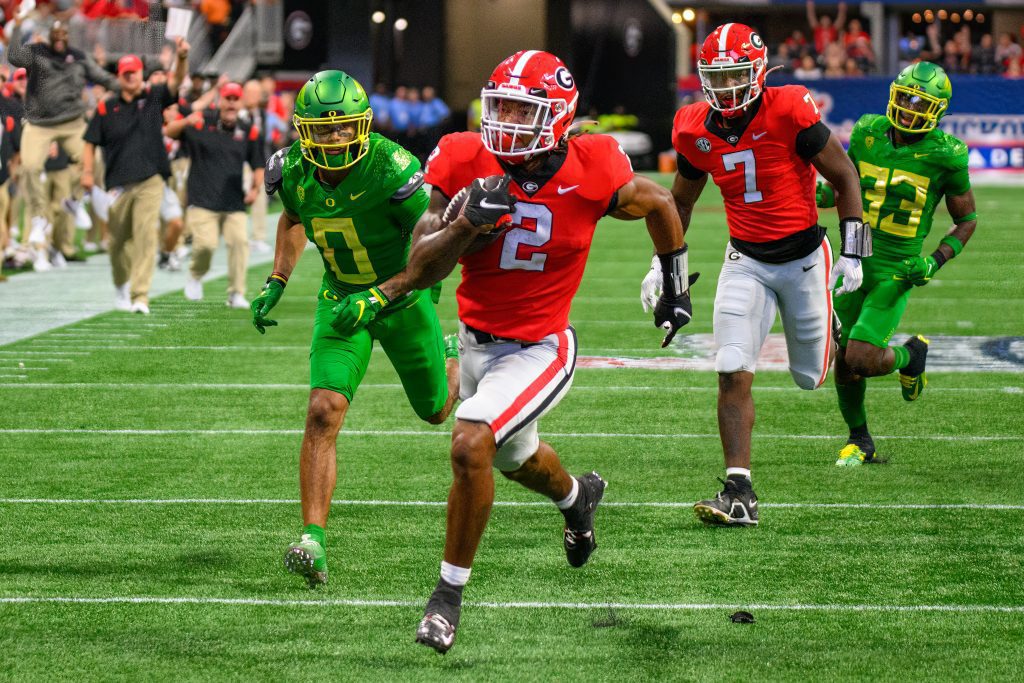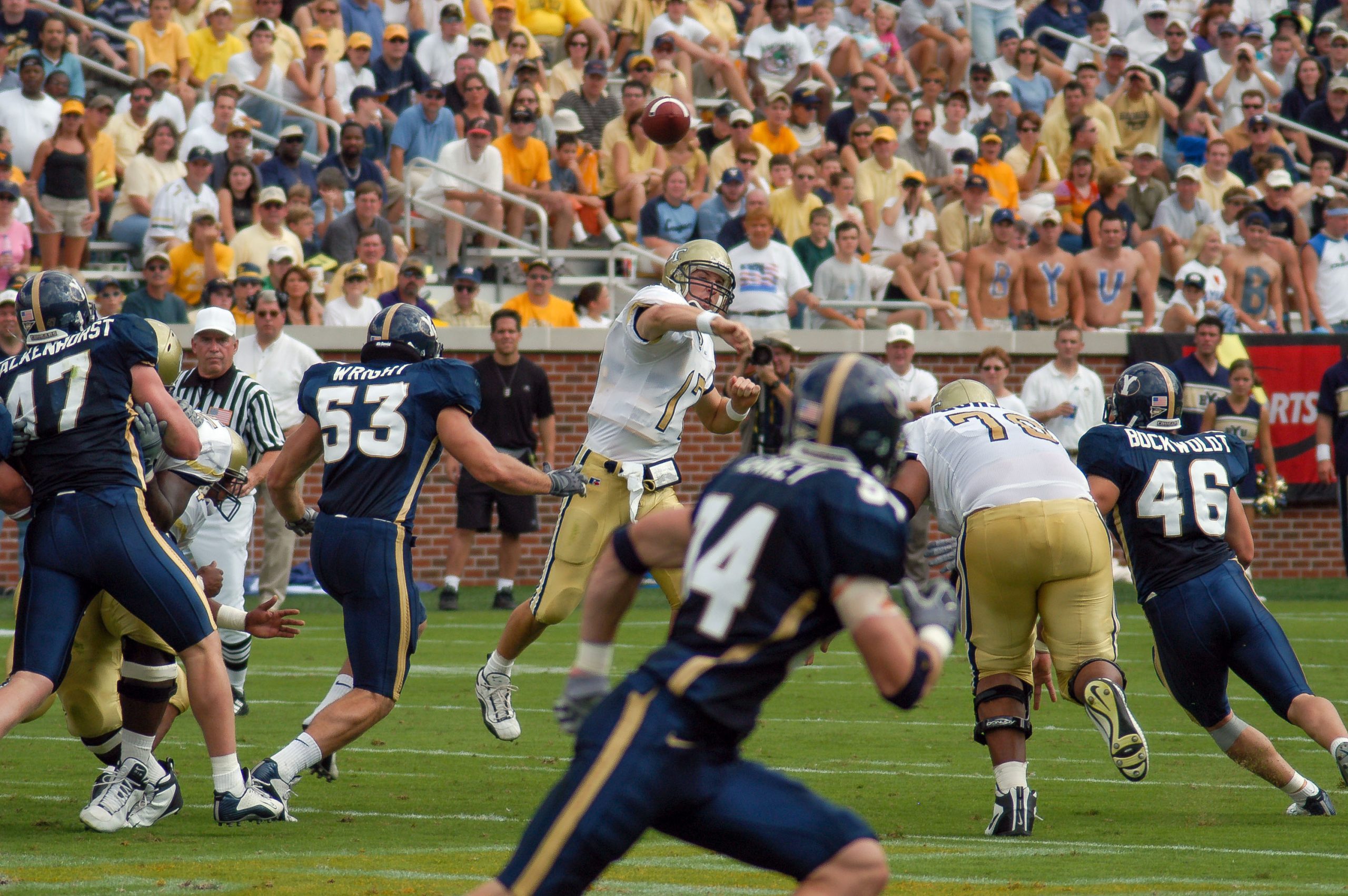This photo was taken during the Georgia Tech vs. Brigham Young 28-19 at Grant Field on September 21, 2002. [NIKON D100, 200.0-400.0 mm f/5.6, Mode = Aperture Priority, ISO 200, 1/1000, ƒ/5.6, (35mm = 345)]
Photographers talk about the ISOs they choose to shoot sports on social media. But don’t they know you always try to pick the lowest ISO possible?
Some photographers post these comments on social media: “Is it possible to get sharp, relatively noise-free images at ISO 16,000? I pushed it to see what I could get away with, and I hit my level of noise tolerance.”
Why would you ever shoot a higher ISO if you can get away with a lower ISO?
The top photo was with my first digital camera, the Nikon D100, in 2002. The game was an early evening game. This photo was taken before sunset when there was still good light. At this point, the sun was low in the sky but still had ample light. The lighting conditions allowed me to shoot at ISO 200.
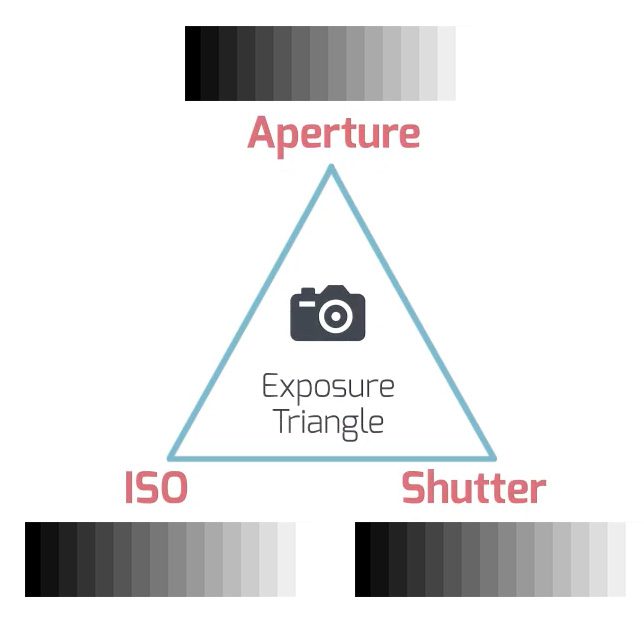
Photography is all about tradeoffs.
The tradeoff is due to the Exposure Triangle, where you balance 1) Shutter Speed, 2) Aperture, and 3) ISO.
In the days of film, this was a more significant tradeoff than today due to film ISO being much more limiting than today’s digital ISO.
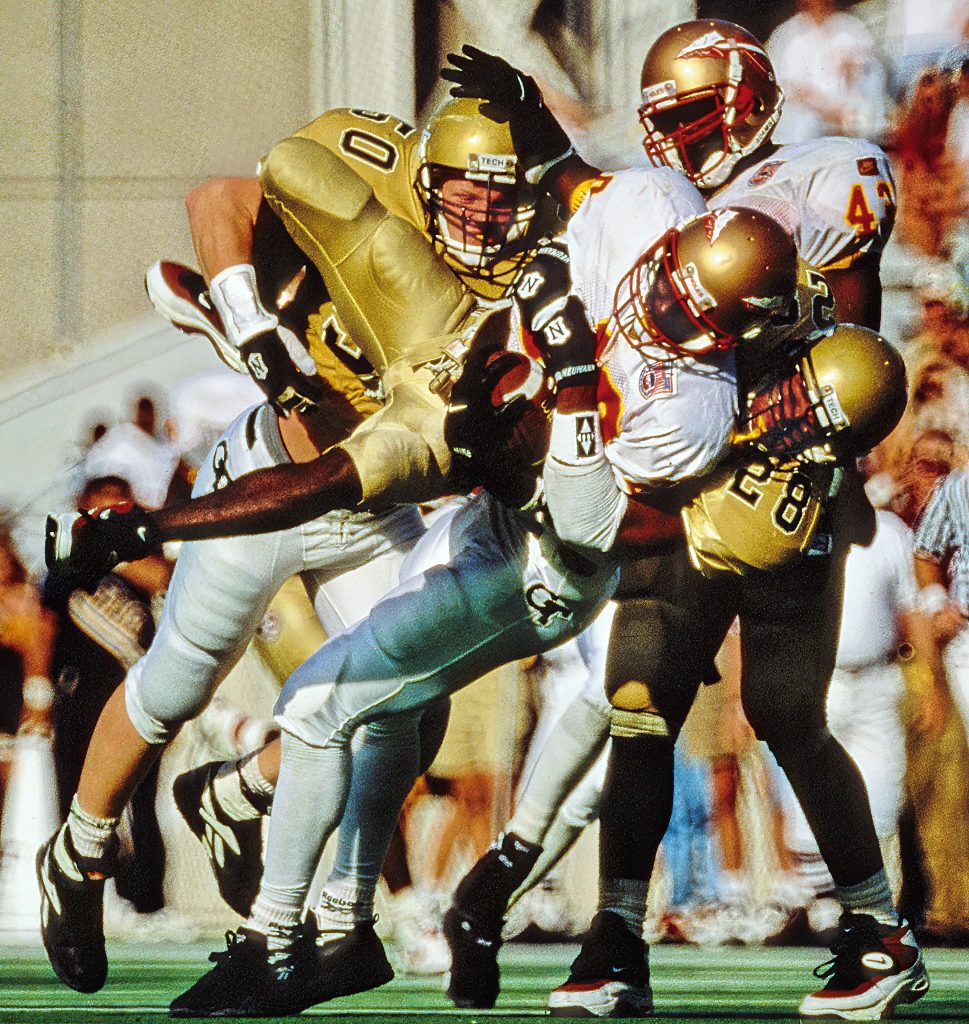
You can watch the play action in the photo above of Florida State vs. Georgia Tech is here on YouTube.
Search for football photos before 2000, when most photographers were still filming. The noise didn’t exist then, but the grain was very noticeable in sports photos.
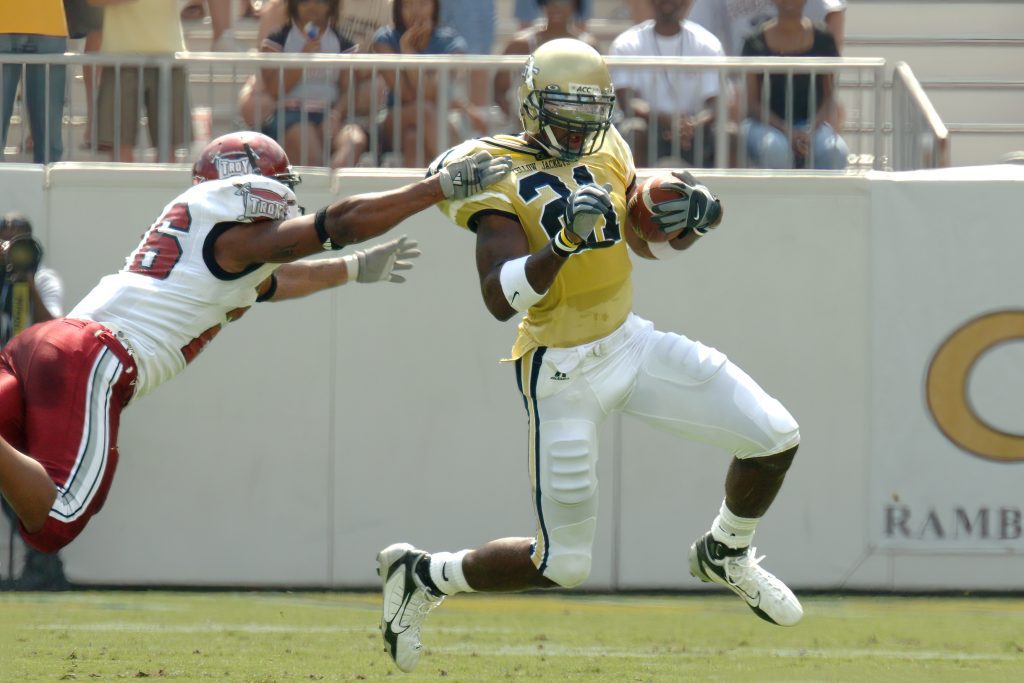
As we know, you can usually only get two of the three parts of the Exposure Triangle. Sports photographers want to freeze the action and have it in focus. Therefore, they sacrifice ISO.
As long as you emphasize sharp and in-focus photos, I suggest you always shoot the lowest ISO to achieve this.
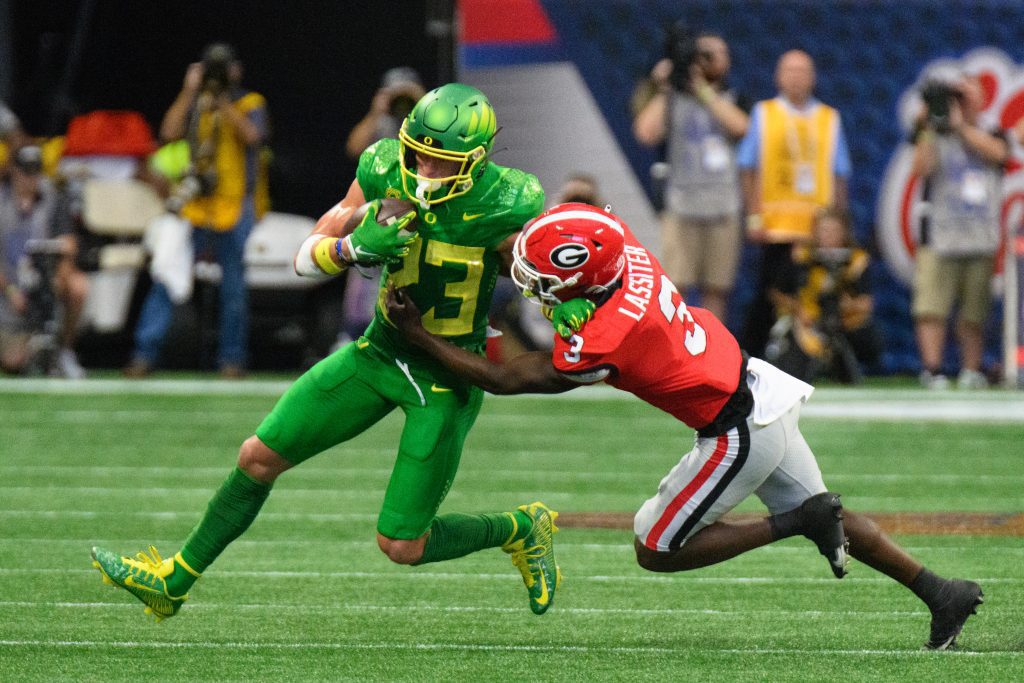
Sometimes, photographers will choose a deeper depth of field because focusing isn’t ideal, and to ensure an in-focus photo, they then have to increase the ISO.
Other photographers shoot at a faster shutter speed to avoid motion and bump the ISO.
The bottom line is that all the veteran professional sports photographers I know are always looking to shoot the lowest ISO.
Today, with some post-processing possibilities, we are not as limited in our choices.
